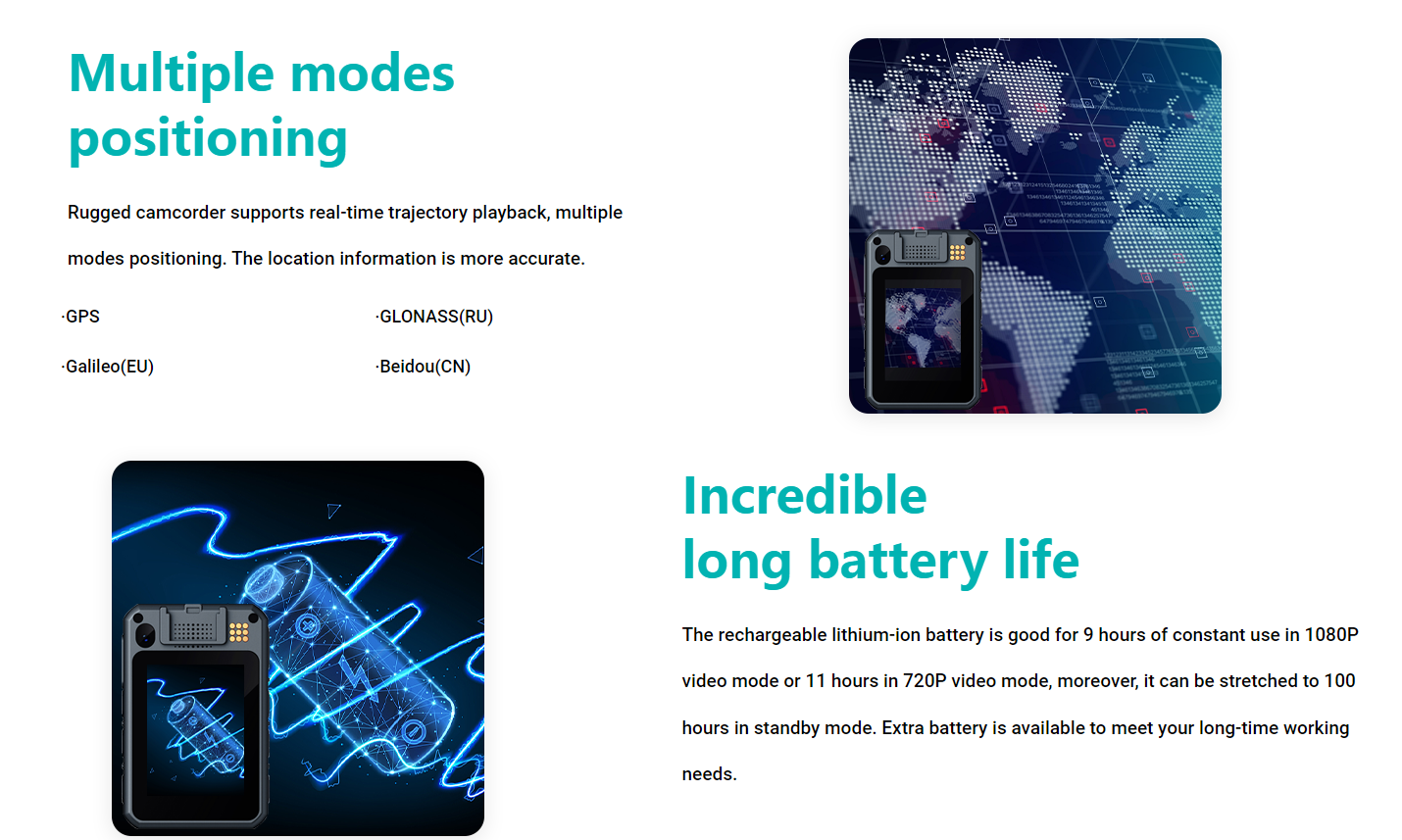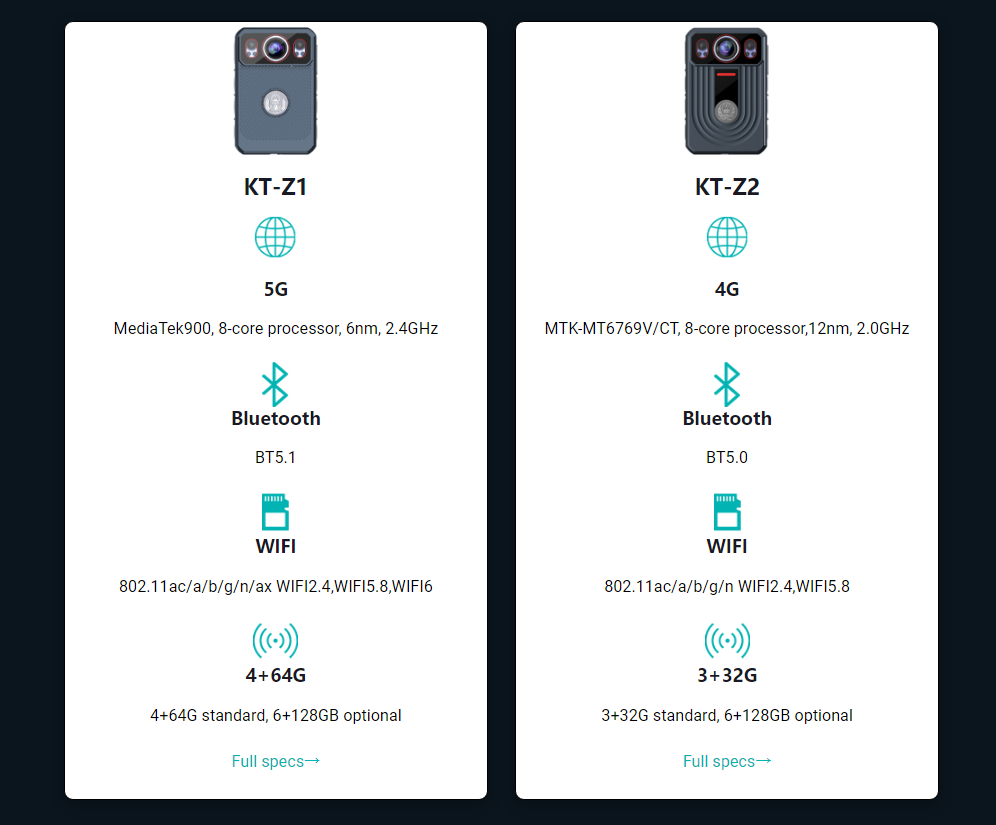Wearing a body worn camera has become a controversial topic in today's society due to its potential implications on privacy and ethics. These small devices, typically worn by individuals such as law enforcement officers, can record our daily lives and interactions. While they offer certain advantages, they also raise concerns regarding personal privacy, consent, and the potential for misuse. This article will explore the pros and cons of body worn cameras to help readers better understand the impact of this technology.
Pros of body worn cameras
①Provide evidence and security guarantees. Wearing a body worn camera can provide real-time video and audio recordings, providing strong evidence for police, security personnel, and other law enforcement agencies. These devices can record unexpected events, criminal behavior, and controversial events, providing important clues for investigating and solving problems. In addition, for individuals, wearing a body worn camera can provide additional safety measures, especially when working or traveling in hazardous environments.
②Promote transparency and fairness in police law enforcement. Wearing a body worn camera can promote transparency and fairness in police enforcement. These devices can record the interaction between the police and the public, ensuring that law enforcement actions comply with legal and ethical standards. In addition, body worn cameras can also prevent police officers from abusing their power or engaging in inappropriate behavior, thereby increasing supervision and accountability for police actions.
③Improve work efficiency and training. Wearing a body worn camera can help employees improve work efficiency and training. For example, in the medical field, doctors can wear body worn cameras to record the surgical process for later review and training. Similarly, in the construction and maintenance industry, wearing a body worn camera can record the work process for inspection and training when needed. These devices can provide real-time perspectives to help employees better understand and improve their work.

Cons of body worn cameras
①Infringement of privacy rights. One of the biggest controversies about wearing a body worn camera is the infringement of privacy rights. These devices can record individuals' daily activities and private conversations, raising concerns about personal privacy. People are concerned that these cameras may be abused to monitor and track individual behavior, thereby infringing on their privacy rights.
②Technical loopholes and abuse. There is a risk of technical loopholes and abuse when wearing body worn cameras. Hackers may invade these devices, steal personal information or tamper with records. In addition, body worn cameras may also be abused for illegal surveillance, malicious attacks, or infringement of others' rights.
③Psychological and social impact. Wearing a body worn camera may have a negative impact on an individual’s psychological and social well-being. People may feel monitored and not free, thus affecting their behavior and free expression. In addition, the presence of cameras may lead to people's distrust and tension towards social interaction.
As we can see, wearing a body worn camera has its advantages and disadvantages. On one hand, it can provide evidence and security guarantees, promote transparency and fairness in police law enforcement, and improve work efficiency and training. On the other hand, it also carries risks of privacy infringement, technological loopholes, abuse, and psychological and social impacts. Therefore, when promoting and using these devices, it is important to carefully consider the pros and cons of body worn cameras, ensure reasonable use, and protect personal privacy.
The future development of body worn cameras
The future development of body worn cameras is expected to focus on several key areas. Firstly, there will likely be advancements in camera technology, leading to improved video quality, higher resolution, and better low-light performance. This will enhance the overall effectiveness of capturing incidents and evidence. Secondly, there may be advancements in storage capacity and data management systems. This will allow for longer recording durations and easier retrieval of specific footage when needed. Additionally, there might be developments in cloud-based storage solutions, enabling seamless and secure access to recorded data from anywhere. Furthermore, there could be improvements in battery life and power management, ensuring that body worn cameras can operate for extended periods without needing frequent recharging. This will be particularly beneficial for law enforcement officers and other professionals who require continuous recording capabilities. Moreover, there might be advancements in real-time video streaming capabilities, enabling live monitoring and remote assistance. This could enhance situational awareness and provide immediate support to individuals wearing the cameras in critical situations. Lastly, there may be increased integration with other technologies, such as artificial intelligence and facial recognition. This could assist in automatically identifying individuals, analyzing behavior patterns, and alerting users to potential threats or anomalies.
Overall, the future development of body worn cameras is expected to focus on improving video quality, enhancing storage and data management, extending battery life, enabling real-time streaming, and integrating with other advanced technologies.
Choose a good body worn camera
Since body worn cameras can offer you so many benefits, you can take into consideration the following features and choose a high-quality body worn camera as you need.
1. Video Quality: Look for a camera that offers high-definition video recording capabilities. This ensures clear and detailed footage.
2. Battery Life: Consider the battery life of the camera. It should be able to last for an extended period to ensure uninterrupted recording during your activities.
3. Storage Capacity: Check the camera's storage capacity. It should have enough space to store all your recorded videos without the need for frequent transfers or deletions.
4. Durability: Please search for a camera that is sturdy and long-lasting, as it will probably encounter different conditions and movements.
5. Ease of Use: Make sure that the camera is designed to be user-friendly and effortless to operate. It should have uncomplicated controls and an intuitive interface.
6. Connectivity Options: Consider the camera's connectivity options. It should be able to connect to your computer or smartphone easily for video transfer and management.
7. Additional Features: Look for additional features that may be useful to you, such as night vision, GPS tracking, or live streaming capabilities.
8. Price: Consider your budget and compare the features and quality offered by different cameras within that range.
Remember to thoroughly research and read reviews before making a final decision.


 French
French German
German Arabic
Arabic Italian
Italian Spanish
Spanish Japanese
Japanese Persian
Persian Korean
Korean Chinese (Simplified)
Chinese (Simplified)










